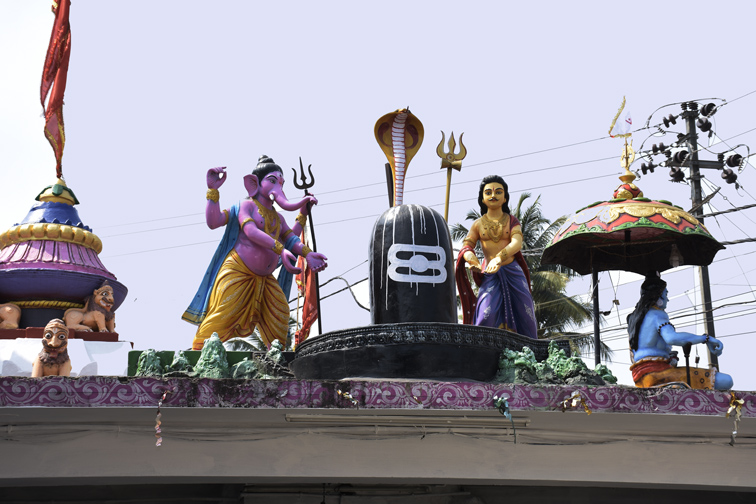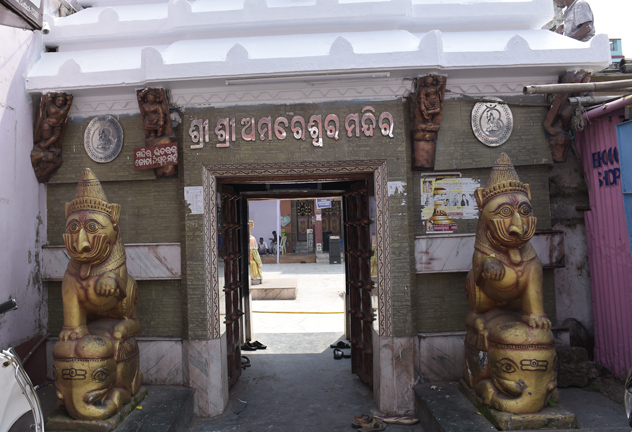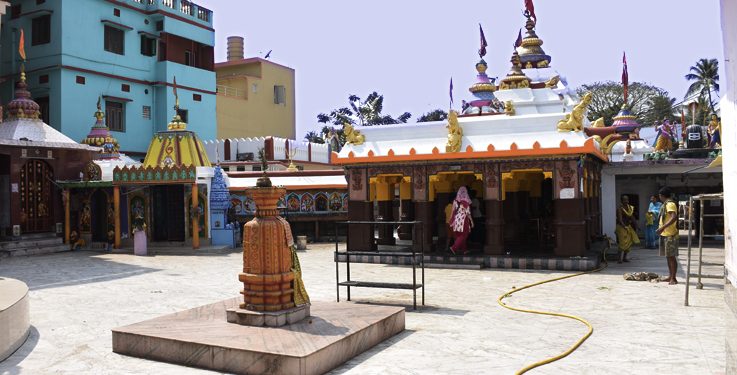The ancient city of Cuttack, the second largest in Orissa, is home to more than a hundred Shiva temples. Among them one of the most significant shivalayas is the Amareshwar temple in Buxi Bazaar. The age-old temple, which houses Shiva and Shakti, has gained prominence over the years because of the large number of devotees it attracts every Panko Udhara Ekadashi and Maha Shivaratri.
The temple has a tranquil ambience despite being located in the middle of a busy marketplace. Besides, there are many interesting stories about Amareshwar temple which makes it a prime tourist attraction. Shiva and Shakti are in the Hiranyagarbha style in the temple. Hiranyagarbha has been described as the “golden foetus” or “golden womb” in Rig Veda and is believed to be the source of the creation of the universe.
Legend has it that Lord Shiva appeared in the dream of the King of Athagada. A few weeks later, the king’s son died. While taking his son to the crematorium, the king came across the place where Lord Shiva had appeared in his dream. The king stopped and declared that if Lord Shiva really resides there, then his son would come back to life and he would build a temple and name the linga Amareshwar (god who gives eternity). A few moments later, his son came back to life. A Shiva devotee himself, the king excavated the place and came across the structure of Shakti. He constructed a temple and, as vowed, dedicated it to Amareshwar.

“Since then, Lord Shiva is worshipped here every day. The king also appointed dedicated priests,” says Manas Kumar Dash, one of the priests of temple. “I have been worshipping here for the last 35 years and heard this story from my grandfather. This story is popular among the people and attracts many people every year to this place, particularly on Panko Udhara Ekadashi and Maha Shivaratri.”
The 600-year-old temple came under attack from Muslim invaders who destroyed the original idols in black chlorite stone that were installed by the king. “The temple was later rebuilt by the Marathas in the 18th century,” says Manas. In fact, a graveyard still exists on the western side of the temple. Although the temple falls under the Endowment Act, the temple is managed by the Amareshwar Mandir Trust Board.
“The priests of the temple hold hereditary status and live in their houses next to the temple. Their ancestors were allotted land by the king to build houses. Inside the temple, the place where the linga rests is filled with water throughout the year, the source being a natural underground fountain. Three days ahead of Mahashivaratri, the water is cleared and the linga becomes visible,” says managing trustee Rakesh Kumar Sahu of Mani Sahu Chhaka.

During this time, footfalls to the temple multiply, as devotees from across the state come to witness this rare sight. “This is the only day when one can get a glimpse of the original Shakti inside the temple. Many who are suffering from acute and chronic diseases come here to take the paduka (holy water) as they believe this will cure their ailments” says Rakesh.
With Mahashivratri around the corner, devotees will once again come in hordes and wait in serpentine queues from midnight. “The temple opens at 4 am but people start queueing up from midnight to offer milk, flowers, fruits and korakhai. Police apart, we have to deploy more than 100 volunteers every year to help and guide the visitors,” says Manas.
The management trust makes special arrangements on this day to ensure that the devotees feel comfortable while performing the rituals. Besides, special performances of devotional songs by local artistes are also arranged in the street adjoining the temple. “One of the biggest attractions is the lighting of the mahadipa that starts around 5 am. This year we expect more than two lakh devotees on Mahashivratri,” says Manas.
SOYONG, OP







































